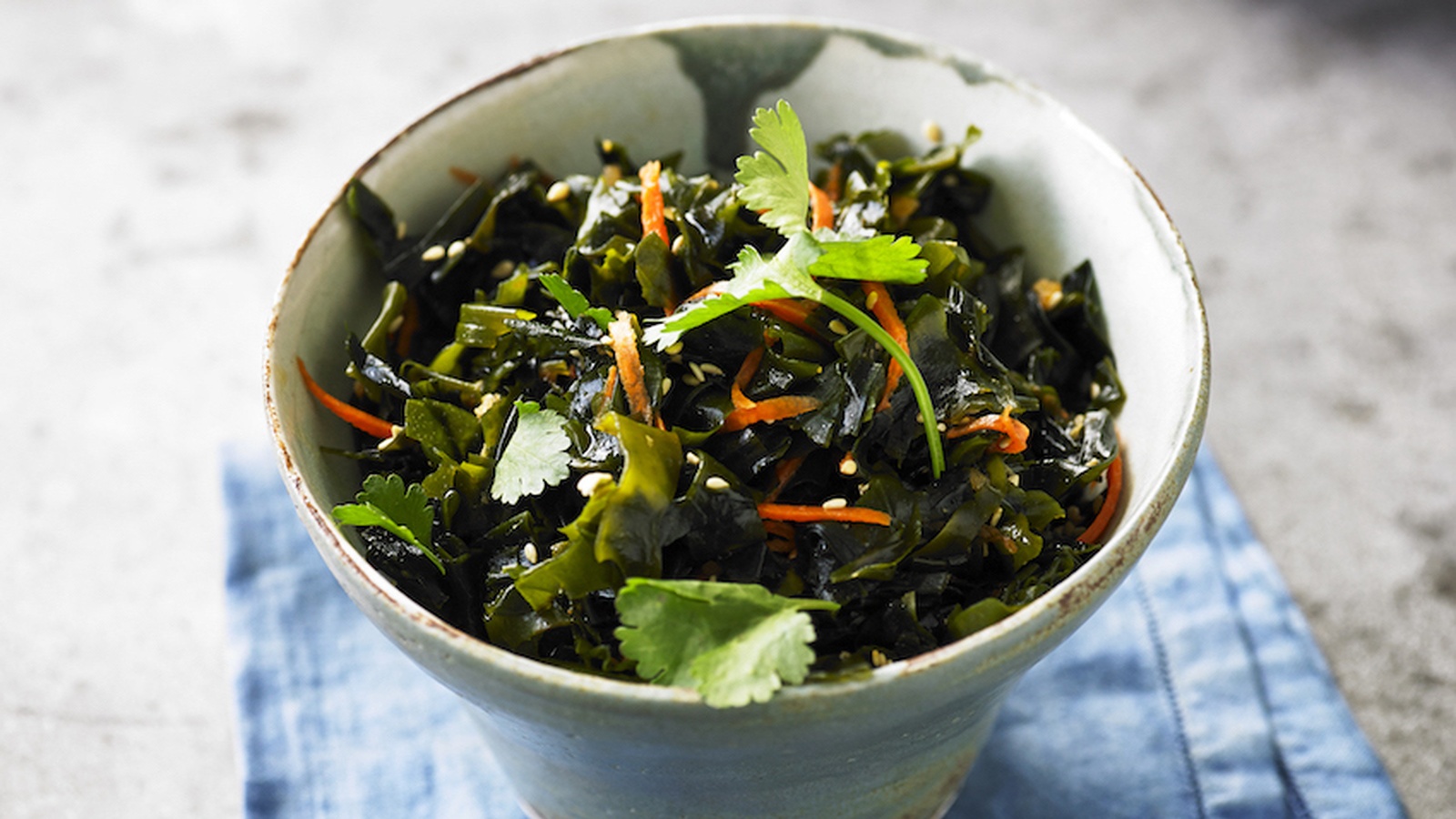Seaweed and Sesame Salad (Plus, Discover Why Seaweed Is Such A Powerful Beauty Food)
You know how in the movies you sometimes see ladies pampering themselves with seaweed body wraps? There’s a reason why they’re covering themselves in the green stuff! Seaweed is great for detoxing the body and it’s a true beauty food. It’s also rich in antioxidants, a great anti-inflammatory, anticoagulant and has antiviral effects. And when it comes to food, seaweed is a super-dooper food! I’m not surprised why Japanese people incorporate it into nearly every dish, including breakfast!
This miraculous food isn’t only enjoyed by Asian cultures, however. Most regions and countries located by waters, such as Scotland, Ireland, Norway, Iceland, New Zealand and the Pacific Islands have been consuming sea vegetables since ancient times.
So Many Names!
The thousands of types of sea vegetables are classified into categories by their unique hues. As Japan remains one of the world's largest sea vegetable producers and exporters, you’ll find the Japanese names for sea vegetables are the most common names found in stores.
In Australia, the most common varieties of seaweed are Kelp, Wakame, (the one you’ll notice circulating round a conveyor belt in a Japanese restaurant when you order a “seaweed salad”), Dulse and Nori - the latter being typically manhandled by masterful, sushi-rolling chefs.
Why It's So Good For You
Seaweed is a fiber-rich food that’s extremely impressive when it comes to its mineral content. It’s high in the under-rated but important mineral, iodine. Iodine deficiency is a problem across the world and can have detrimental impact on the thyroid gland, which helps to regulate hormones. Without sufficient doses of iodine, we can experience fatigue, muscle weakness, high cholesterol, heart palpitations and impaired memory.
Seaweed offers one of the broadest ranges of minerals of any food, as it contains all the minerals found in the ocean, which, consequently, are identical to many of the minerals found in human blood.
Seaweed’s impressive mineral content can be attributed to the fact that it’s not farmed in the same way as vegetables that grow on nutrient-poor soil.
You don't need to go overboard on too much seaweed though; according to Food Standards Australia New Zealand, eating one sushi roll will provide your body with 92 micrograms of iodine. The recommended daily intake of iodine for adults is 150 micrograms (one 20,000th of a teaspoon). Excessive amounts of iodine can lead to hyperthyroidism which is known as an overactive thyroid, causing symptoms including palpitations, fatigue and weight loss.
Wakame and Nori are great sources of calcium, iodine, folate and magnesium, while purple varieties of seaweed are particularly rich in B vitamins. Researchers have recently discovered that a substance in seaweed can support digestive health by strengthening gut mucus, slowing down digestion (so you feel fuller for longer) and reducing the release of energy from food. Seaweed is also high in fiber and increases the presence of good bacteria in the gut.
Nowadays, various varieties of seaweed can be found in supermarkets and Asian grocery stores throughout the year so there are no specific seasonal requirements when purchasing. When harvesting, as a general rule of thumb, seaweed has the highest nutrients in spring and the lowest in autumn.
How To Use Seaweed
One simple way of incorporating seaweed into your recipe repertoire is to keep a container of Kelp or Dulse flakes on the kitchen table and use it as an alternative to refined salt for seasoning foods, or add it to sea salt for added iodine.
You can also experiment with adding seaweed to vegetable dishes, stir-fries, sushi/rice paper rolls, salads, and miso soups. Dried seaweed sheets can be purchased from your local Asian grocer or health food store, and enjoyed as a stand-alone snack (just a tip, be sure to check for green chunks in your teeth once you’re finished!)
Seaweed is easy to add to dishes, as it requires no cooking and only a small amount is necessary to enhance the flavor of your meals. Why not try this delicious Seaweed and Sesame Salad from my Eat Yourself Beautiful Cookbook and let me know what you think?
Seaweed and Sesame Salad
Ingredients
- 25 g dried wakame seaweed
- 60 ml apple cider vinegar
- 60 ml wheat-free tamari
- 1 tbsp sesame oil
- 6 drops stevia liquid or 1 tbsp rice malt syrup (optional)
- 1 tsp ginger, grated
- 1 tbsp freshly squeezed lemon juice
- 1 garlic clove, minced
- 1 carrot, grated
- 2 tbsp coriander leaves, chopped
- 1 tbsp toasted sesame seeds, to serve
Method
- Place the seaweed in a small bowl and cover with water. Soak for five minutes, then drain and rinse under running water, squeezing out any excess water.
- In a medium bowl, mix the remaining ingredients together, except for the sesame seeds, and toss to combine well.
- Sprinkle with the toasted sesame seeds and serve.
Do you have a passion for nutrition & natural healing?. Learn more about the Food Matters Nutrition Certification Program here.










